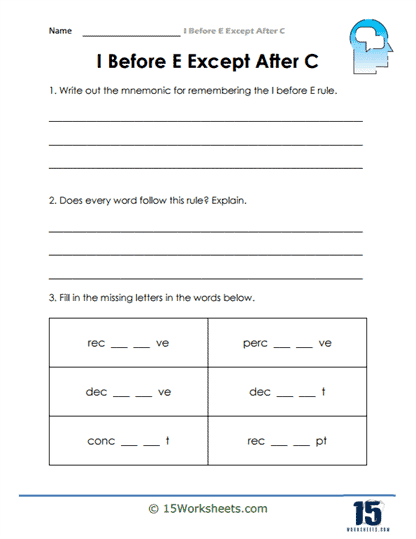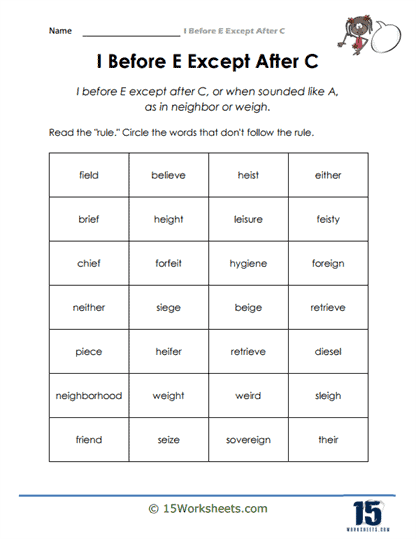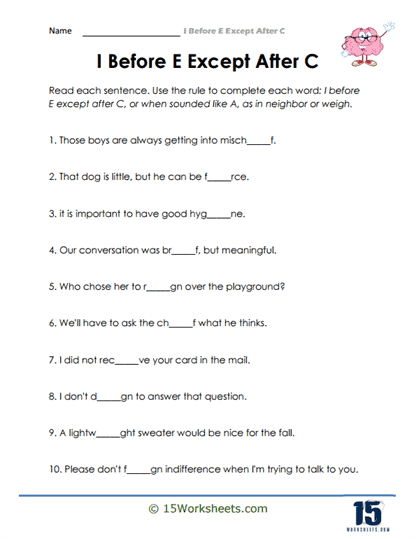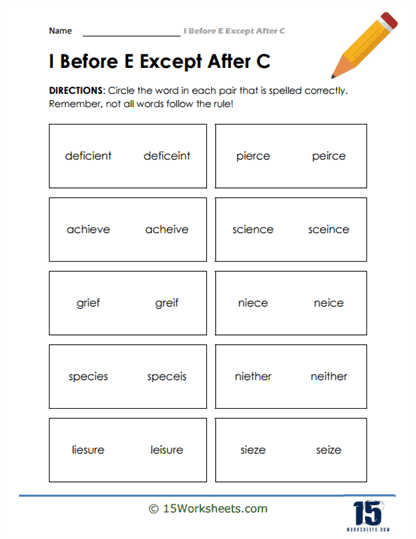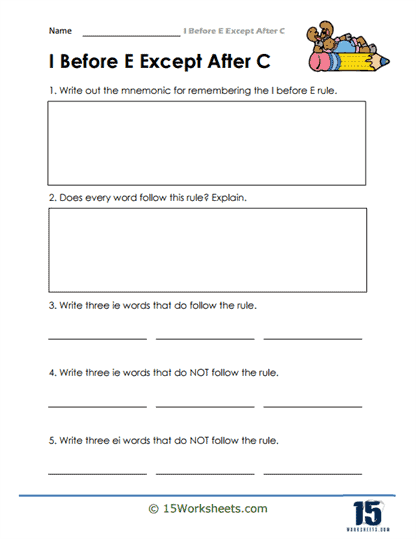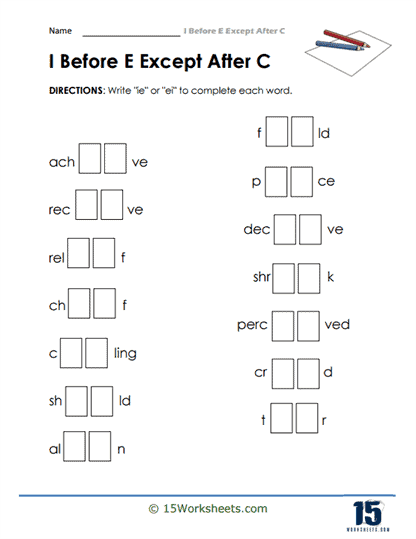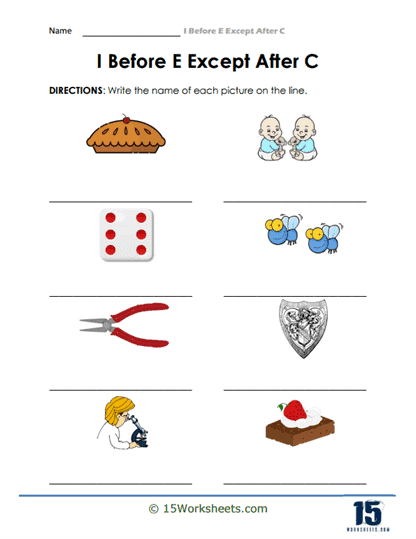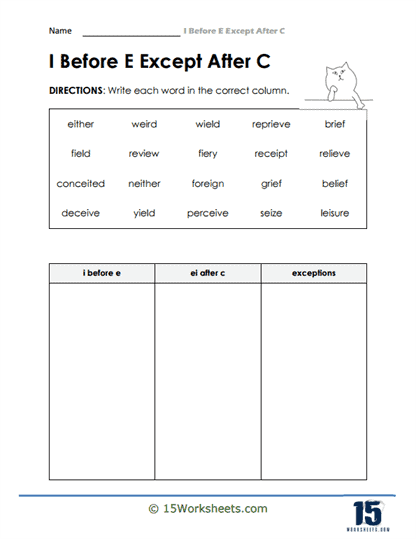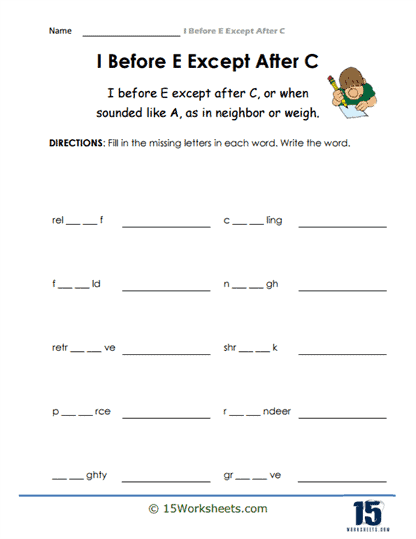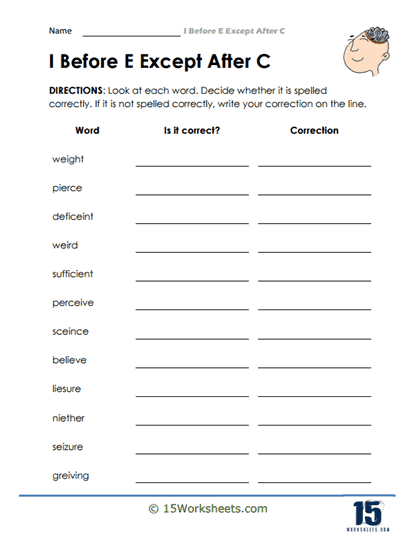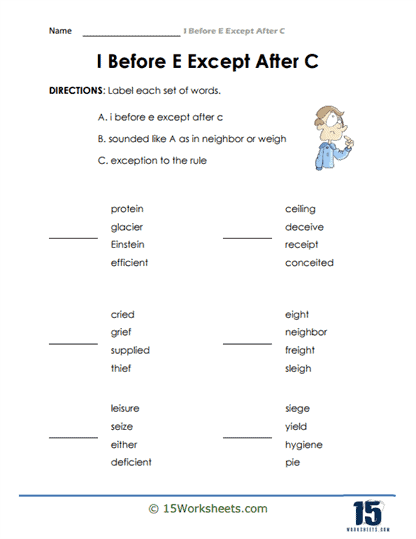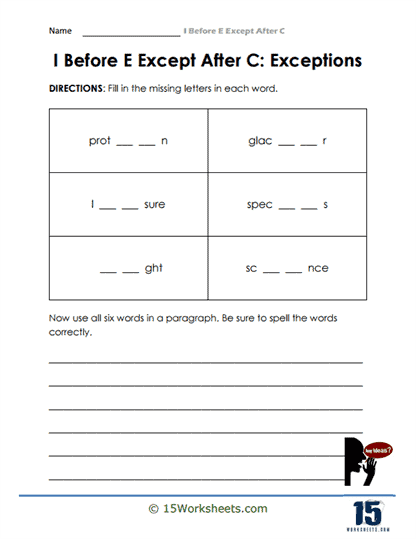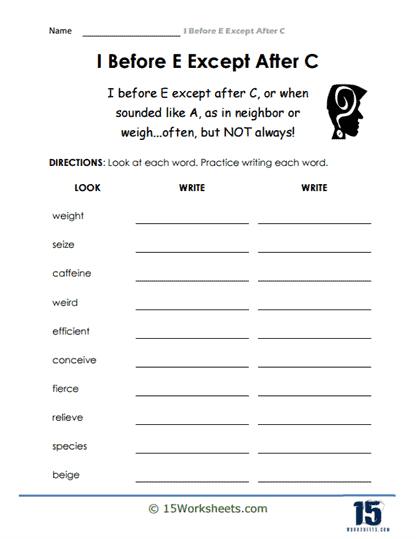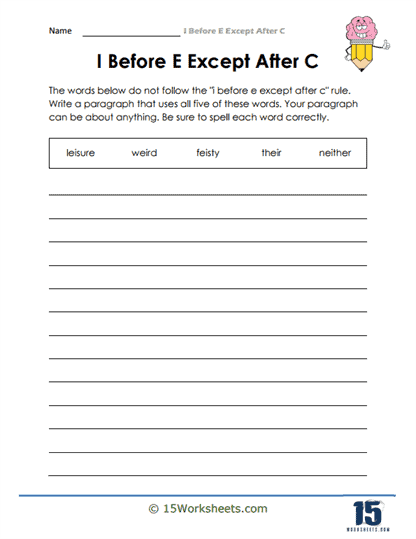I Before E Except After C Worksheets
All About These 15 Worksheets
These “I Before E Except After C” worksheets are educational resources designed to help students learn, understand, and apply the classic English spelling rule – “I before E, except after C.” This rule states that when spelling words with the “ie” or “ei” vowel combination, the letter “i” usually comes before “e,” except when the letters follow the letter “c.” These worksheets focus on this specific spelling rule and provide students with practice in applying it to various words.
Some common types of activities found in “I Before E Except After C” Worksheets include:
Sorting – Students sort words into two categories based on whether they follow the “I before E” or “E before I” pattern.
Fill in the Blanks – Students complete sentences by filling in the missing “ie” or “ei” words.
Word Lists – Students are given a list of words that follow the rule or serve as exceptions, and they practice spelling and using them in context.
Word Puzzles – Students solve word searches, crosswords, or scrambled word puzzles that incorporate “ie” and “ei” words.
Identify Exceptions – Students are asked to identify words that do not follow the “I before E, except after C” rule, such as “weird,” “seize,” or “leisure.”
This series of worksheets aim to help students reinforce their understanding of this spelling rule and improve their overall spelling skills. Teachers can use these worksheets in the classroom to supplement their instruction or as a fun and engaging way to practice spelling. Parents can also use these worksheets to help their children practice and improve their spelling skills at home.
What is The “I Before E Except After C” Spelling Rule?
The spelling rule “I before E, except after C” is a general guideline in the English language that helps with the spelling of words containing the vowel combination “ie” or “ei.” The rule states that when spelling words with this vowel combination, the letter “i” usually comes before “e,” except when the letters follow the letter “c.”
Here’s the rule broken down:
- When you have an “ie” or “ei” combination, usually it will be “i” before “e” (e.g., believe, friend, achieve).
- However, if the “ie” or “ei” combination follows the letter “c,” it is more likely to be “e” before “i” (e.g., receive, ceiling, deceive).
It’s important to note that this rule has exceptions and does not apply to all words with the “ie” or “ei” combination. Some common exceptions to the rule are:
- When the vowel combination has an “ay” sound, like in “weigh,” “neighbor,” or “reign.”
- Some words that do not follow the rule include “weird,” “seize,” “leisure,” and “either.”
While the “I before E, except after C” rule is a helpful guideline, it is essential to remember that it is not universally applicable. It is still crucial to familiarize yourself with the spellings of individual words and to practice regularly to improve your spelling skills.


